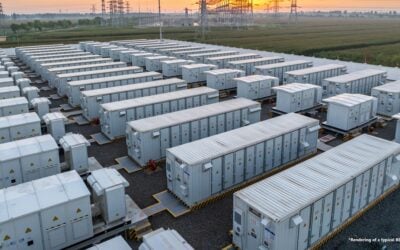
Just over 70% of the successful projects in the first window of the UK’s long-duration energy storage (LDES) scheme use lithium-ion BESS technology.
UK energy regulator Ofgem revealed its final decision for which of the 171 applicant projects will now proceed to the project assessment period yesterday (23 September).
Ofgem has determined that 77 projects met the criteria, some of which are scheduled for 2030 operations (Track 1) and some for 2033 operation (Track 2).
The scheme will provide a cap-and-floor revenue stabilising mechanism to successful projects, which you can read more about in our coverage of a webinar on the topic by consultancy Baringa, published on ESN Premium on Monday.
Enjoy 12 months of exclusive analysis
- Regular insight and analysis of the industry’s biggest developments
- In-depth interviews with the industry’s leading figures
- Annual digital subscription to the PV Tech Power journal
- Discounts on Solar Media’s portfolio of events, in-person and virtual
The 77 projects total 28.7GW of capacity and will need to be deployed as, at a minimum, 8-hour systems.
By GW capacity, lithium-ion battery energy storage systems (BESS) account for 70.4%, pumped hydro accounts for 16.0%, vanadium flow battery/zinc battery hybrid projects for 9.1%, pure vanadium flow battery projects for 3.1%, with a handful of liquid air energy storage (LAES) BESS hybrid and compressed air energy storage (CAES) making up the remainder.
See the full table from Ofgem below, and the full list of projects in its document here.

The 16 projects with both vanadium flow battery and zinc battery as their chosen technology totalling 2.6GW of power are all from developer Frontier Power, which is aiming to use the technology from Invinity Energy Systems and Eos Energy Enterprises respectively.
BESS developer Field also had five BESS projects totalling 1.6GW progress, while Fidra saw its Thorpe Marsh project progress, though it only put forward part of its total capacity. Amongst the handful of successful pumped hydro projects was utility and power firm SSE’s Coire Glas project in Scotland.
The emergence of lithium-ion BESS as a real contender for LDES is relatively recent. OEM Envision Energy recently wrote a guest blog for us about how price falls have made it cost-competitive for 10-hour applications, and the global LDES pipeline now reflects this according to research firm Sightline Climate.
Mark Horley, Senior Policy Manager at Ofgem, will deliver the opening keynote on the LDES Cap & Floor Scheme at the Battery Asset Management Summit UK & Ireland, 14–15 October 2025 in London. Book your pass to hear directly from Ofgem on what comes next and how the scheme will provide long-term stability for UK battery storage assets.





